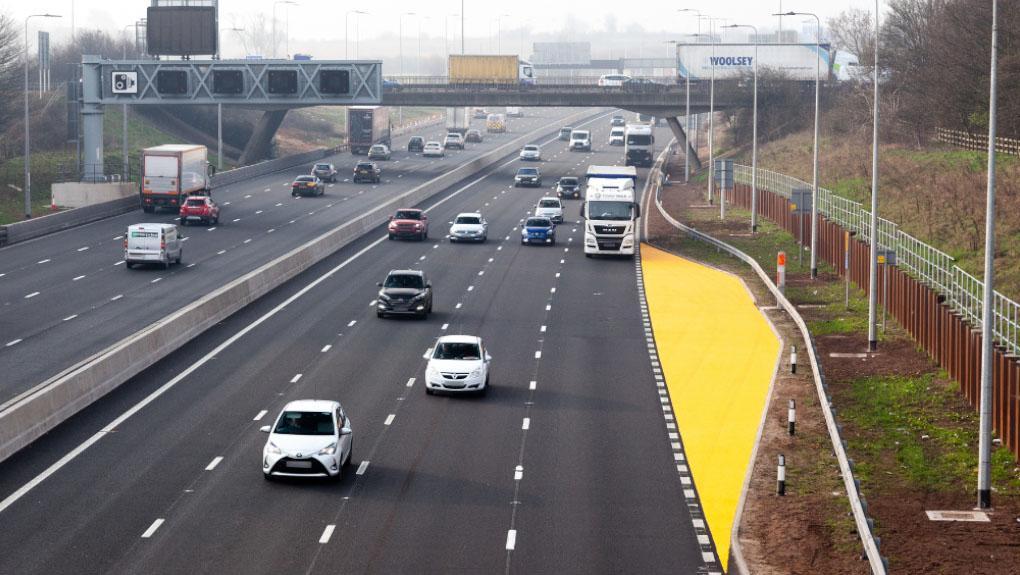
Hello and welcome to the November newsletter
My role as Director of Planning and Performance means having a relentless focus on working with the regulated entities to ensure that rail passengers and road users have a good journey. The last month has seen my team working especially closely with both Network Rail and National Highways to pursue this.
I recently wrote to Network Rail following a significant rise in delays in the Eastern region, which have increased from 2.4 million to 3.3 million minutes annually over the past two years.
Punctuality and reliability continue to decline, with more shortfalls projected against targets. Passengers and freight on the East Coast Main Line have seen increased delay from incidents and punctuality on the East Midlands route has also worsened. While the Anglia route generally maintains good performance, the North London/Mildmay line - used by London Overground and freight services - has seen marked declines. We encourage both Network Rail and train operators need to prioritise improvements across the region.
Following our intervention, Network Rail’s Eastern Region has committed to delivering an improvement plan by 20 December 2024. We have recommended it considers the successful approach used in the Wales & Western region, which developed a robust plan earlier this year; again, following our review.
We are calling on Network Rail to take a whole-system approach, working closely with train operators and other stakeholders to drive sustained improvements in punctuality and reliability.
On the roads, in response to the 2021 Transport Select Committee inquiry into smart motorways, the Department for Transport asked us to evaluate the effectiveness of safety systems, such as stopped vehicle detection (SVD).
Our report published last December noted improved SVD performance by National Highways, although current roadworks to add emergency areas on all-lane running motorways have temporarily disabled many of these safety systems.
We are working closely with National Highways to ensure that temporary mitigations, including reduced speed limits and emergency lane closures, maintain safety during these works.
National Highways has meanwhile been set an ambitious target to reduce the number of people killed or seriously injured on England’s strategic road network by 50% by the end of 2025. While a 39% reduction was achieved by 2023, additional effort is necessary to reach this goal.
Although improvements have been made, ORR believes it is however unlikely the target will be met by the deadline. So, we will continue monitoring National Highways' efforts and provide an updated assessment in our February 2025 safety report.
Feras Alshaker
Director of Planning and Performance
Top stories
Ladbroke Grove - 25 years on: 'This was an era-defining event'
On the morning of October 5, 1999, two commuter trains collided at Ladbroke Grove in London, resulting in 31 deaths and over 400 injuries. This tragedy remains one of the worst rail accidents in the UK. In commemoration, we published two blogs that reflect on the experience of being on site and discuss ongoing work to prevent such accidents from happening again.
In the first blog, Giles Turner, ORR’s Head of Interoperability and Rail Vehicle Engineering, shares his experience as an inspector visiting the site just days after the accident.
In the second blog, Ian Maxwell, ORR’s Head of Train Control Systems, describes his role in helping to revise the signal-sighting standards to enhance safety.
ORR attends Highways UK conference
In October, we joined others from across the roads sector at Highways UK 2024. ORR CEO, John Larkinson, joined Transport Focus, DfT, CIHT and National Highways on the opening panel to discuss connecting customers with confidence through an optimised strategic road network.
Rachel Gittens, ORR’s Deputy Director of the Strategic Road Network, also delivered a presentation at the conference to a packed audience. She joined a panel of colleagues, hosted by Guy Dangerfield of Transport Focus, to discuss the evolving landscape of the strategic road network and the role of oversight. In her presentation, Rachel highlighted ORR's crucial role in holding National Highways to account during a time of change.
Why has the average age of passenger trains decreased?
In his blog, Jack Willows, Senior Analyst at ORR, explains what factors influence changes in the average age of rolling stock, following our publication of statistics on the average age of rolling stock for each rail operator in Great Britain.
Statistics
This month we have published the following statistics:
- Passenger rail usage - Apr - Jun 2024 (Q1)
- Passenger rail performance - Cancellations data, 18 Aug 2024 - 14 Sep 2024 (Period 6)
- Rail infrastructure and assets - Annual (2023-24)
- Delay compensation claims - 1 Apr 2024 - 20 Jul 2024 (Periods 1-4)
- Rail environment (previously named Rail emissions) - Annual (2023-24),
- Disabled Persons Railcards (DPRC) and assisted journeys - 1 Apr 2024 - 20 Jul 2024 (Periods 1-4)
- Rail passenger assists - 1 April 2024 to 20 July 2024) (Periods 1 to 4)


